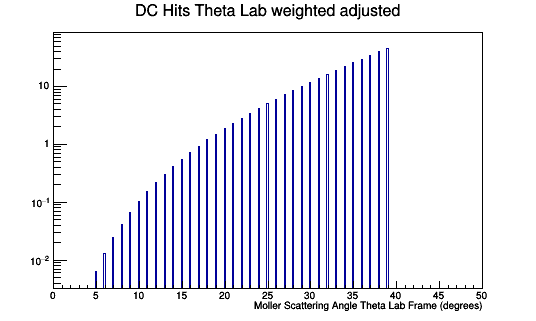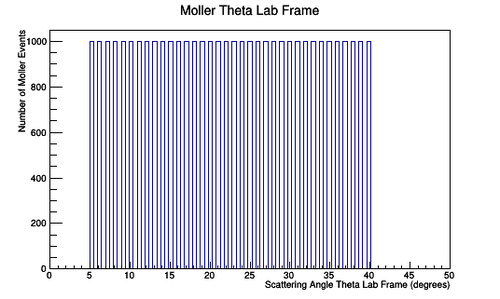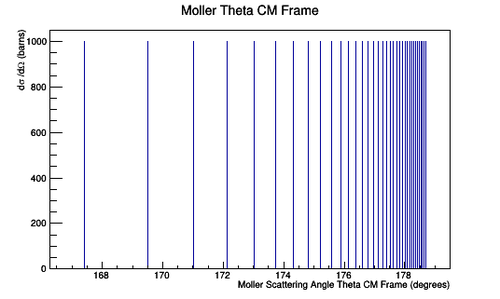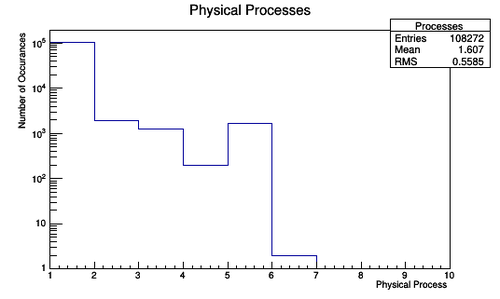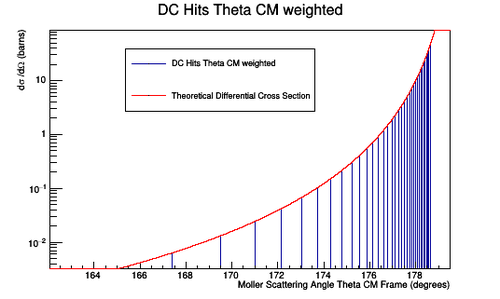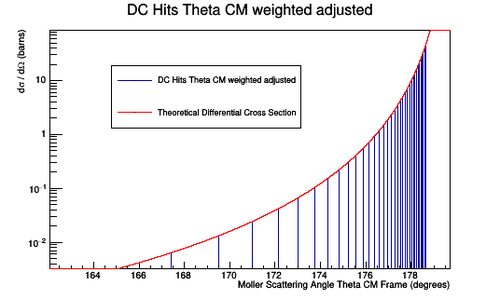1000 Events per degree in the range 5 to 40 degrees for Lab Frame
1000 events per degree of 5 to 40 degrees in the Lab Frame
Examining the CM Frame Theta angles which correspond to Lab frame angles within 5-40 degrees (with bin widths of 0.1 degree), for only on degree in Phi (0 degrees). For each degree in Theta in the Lab frame, the correct kinematic variables for a specific events is written to a LUND file 1000 times. File:LUND Spread LH2 5to40Lab.C
These events are read from the evio file using File:Evio2root.c
The Moller Scattering angle Theta is read from the LUND file, it's weight applied, and it's weight adjusted by dividing by the number it was multiplied by (1000) to give a differential cross-section for one electron. This is plotted against the theoretical differential cross-section for one Moller electron. File:MollerDiffXSect.c
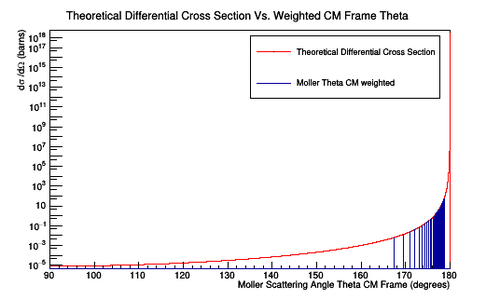
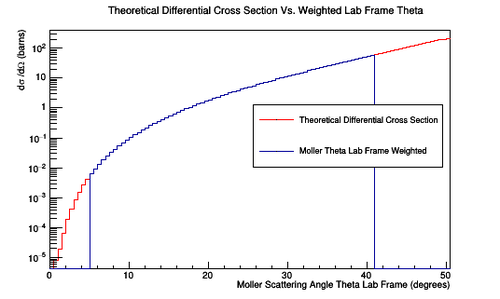
From the evio file, a histogram can be constructed that will only record the Moller events which result in hits in the drift chamber. A hit for this setting is the procID value of 90 which corresponds to a transportation process (i.e. if the particle was a primary particle). Dividing DC hits by the procID variable, we find for the hits which are not transportation process for the primary parent particle:
| Process Name | ID |
|---|---|
| 1 | e ionization |
| 2 | compton scattering |
| 3 | e bremsstrahlung |
| 4 | Photo Electric Effect |
| 5 | Gamma Conversion |
| 6 | e+ Annihilation |
| 90 | na |
Plotting the Moller scattering angle Theta in the Center of Mass frame just for on occurance of the CM angle gives the Moller Differential Cross-section.
Adjusting the weight by the number of times the specific angle caused hits. We should recover the Moller differential cross-section as found previously.
Once the validity of the Moller differential cross-section is established, we can transform from the center of mass to the lab frame as shown earlier. Since the detector is in the lab frame, the hits collected will have to be used to compose a histogram for the Moller scattering angle in the lab frame. We can show that the Moller events that register as hits in the lab matches the Moller differential cross-section in the lab.
